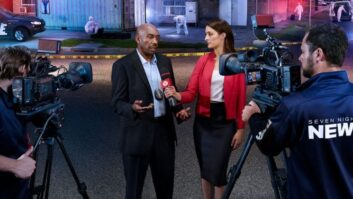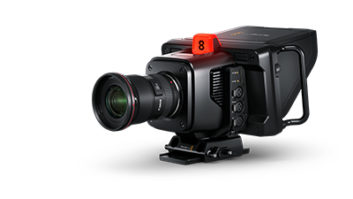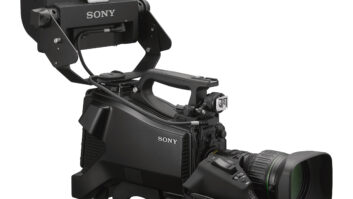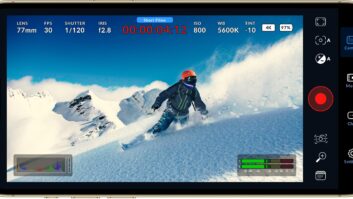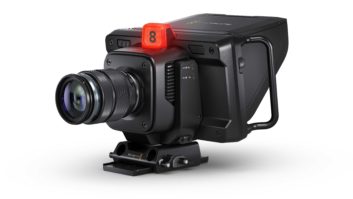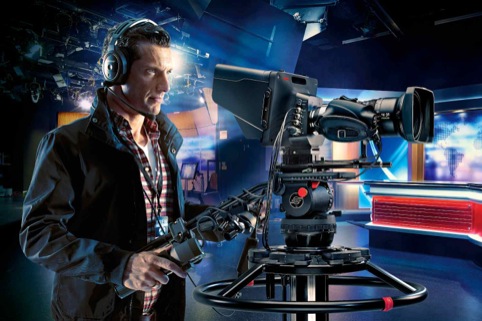
Blackmagic Design underscored the can-do attractiveness of Ultra HD production at NAB with release of four new 4K cameras, including a Studio Camera for live broadcast production.
The company’s camera range already includes a 16mm-style digital pocket camera and two self-styled Cinema Cameras sporting 2.5K and 4K sensors respectively.
According to Simon Westland, company sale director EMEA, the intention was always to develop different camera models for different purposes.
“When you have one camera everybody tries to do everything with that one camera whether in studio, or on set, or for field recording,” he said. “When designing the original Cinema Camera (released in 2012 with a 2.5K sensor) we felt it would be used on a more intimate and handheld basis, for taking anywhere. We never anticipated people would start to build them into very big rigs with follow focus and XLR breakout boxes. We took all that feedback to design a full sized production camera.”
The resulting Ursa comes in four models, three of which include a Super 35 4K image sensor with global shutter, 12G-SDI connections, XLR audio inputs and dual CFast based Raw and ProRes recorders. One includes an EF lens mount and one has a PL lens mount, while another features a B4 mount for broadcast video, all of which will ship this year (the B4 mount option by year end) for less than £3000, without lens.
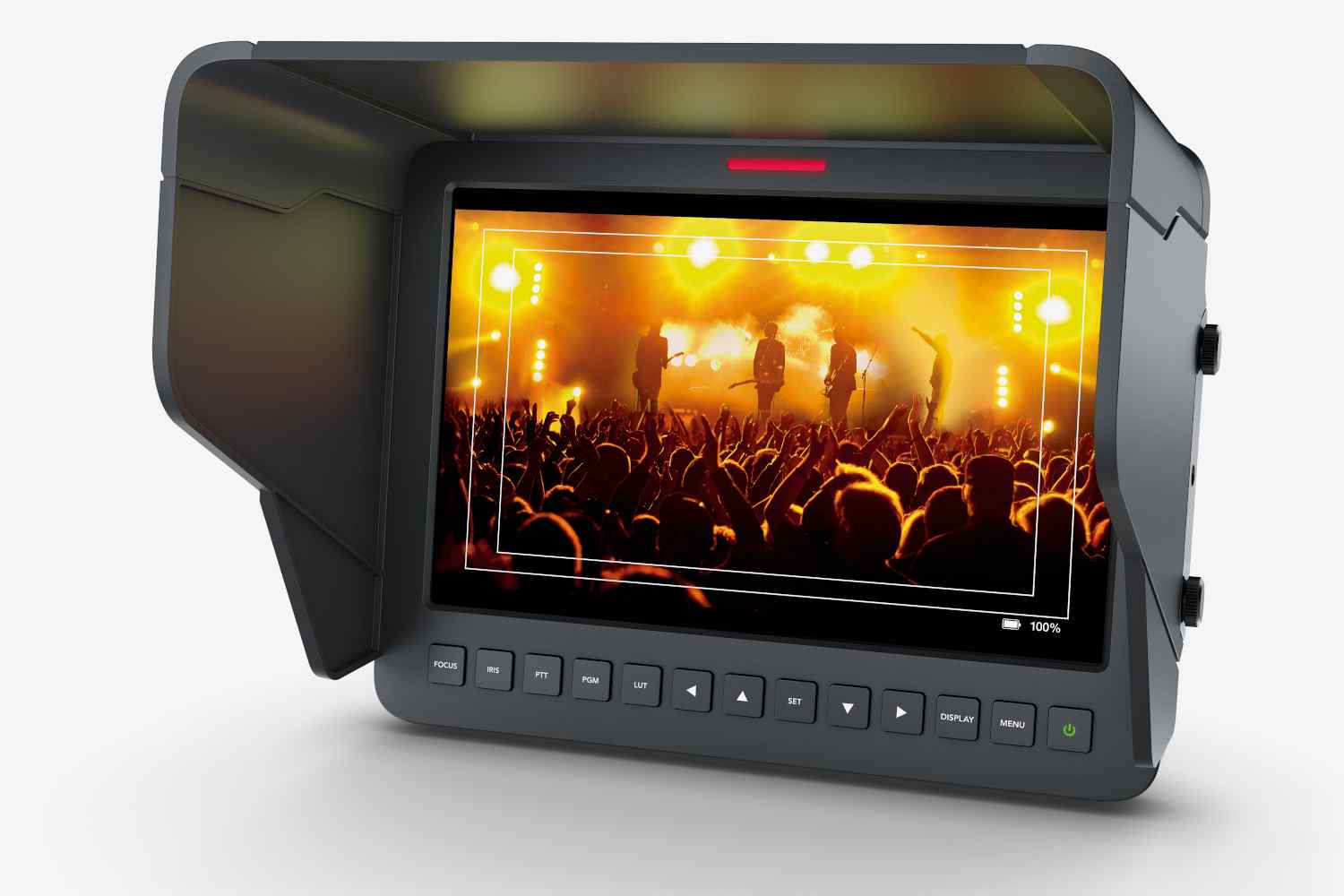
Equally eye-catching is the new Studio Camera, which features no handles or straps nor any internal recording capability. Instead it is designed to be used on a tripod or pedestal in studio or for live events. Its built-in optical fibre will enable the camera to be connected easily over long distances and the fibre embeds talkback and tally and other standard operational functions direct to Blackmagic studio devices like the ATEM switcher.
“We included a 4-hour battery so it can work remotely at a live event where there’s no power connection so users can take the camera closer to the action,” said Westland.
“Its also at home in the studio,” he added. “We’ve miniaturised many of the functions, but one we didn’t was the viewfinder. The 10-inch LCD is on the same axis as the lens, rather than having a monitor offset, above or to the side of the camera. When you look down the viewfinder you are directly behind the lens, so while it’s a very compact unit in all other aspects, it feels huge when you are behind it.”
An HD version of this camera is already shipping with the £1800 Ultra HD version due in June, available like the rest of Blackmagic’s cameras direct from the vendor.
Although the price point is tempting, proof as always will be in the willingness of cinematographers and producers to shoot shows with the cameras. Westland says all its cameras have gone through secret testing with users and that a number of high-profile projects are currently shooting with its cameras.
“We’re frankly shocked by the take up of our existing cameras on some pretty significant high-end film productions. I can’t divulge any since they are under NDA but we have two to three major projects shooting or in post in the UK using our cameras.”
Cinematographer Rodney Charters, ASC shot the retuned seasons of Dallas on an ARRI Alexa accompanied by the Blackmagic Pocket Cinema Camera for B roll.
“Our primary objective is to consider what the user needs from the camera. I’m sure GoPro’s developers never imagined that the action cam they designed for extreme sports would wind up in use on feature films. The customer will find uses for the technology if we make it available.”
Westland said that Blackmagic’s motivation to get into cameras was the acquisition of Da Vinci. “That for us was a key turning point and kick-started the camera range. Da Vinci was clearly used to processing the output from all types of cameras from the Canon 5D shot at H264 compressed to the revolutionary cameras developed by ARRI and Red. Da Vinci could handle digital film workflows and factors like compression and colour sampling, all of which was key to developing our cameras.
“We didn’t develop any proprietary codecs for the cameras; we haven’t developed a Blackmagic Raw file type. We’ve always kept with industry standard open codecs like Raw CinemaDNG, ProRes or DNxHD, and we’ve always had a very focussed approach toward post in the way we handle metadata. The cameras also have common connections, such as standard HDMI and audio inputs. There is nothing proprietary on them.”
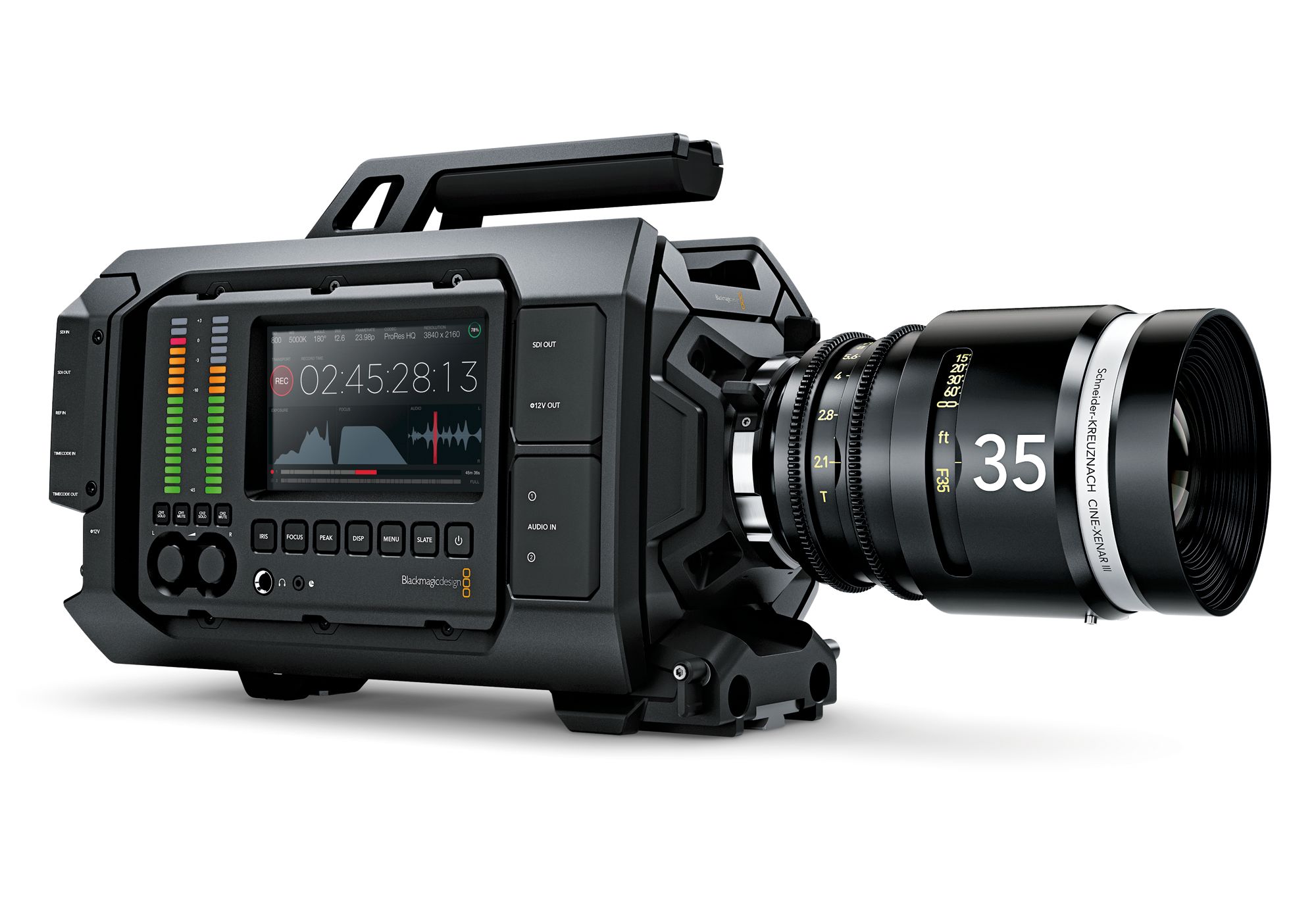
Westland dismisses suggestions that the company has a higher than 4K resolution camera in the labs, although the release of one at next NAB would hardly be a surprise given the firm’s track record.
Perhaps more interesting, given BMD’s product suite of post production gear like Da Vinci, would be the development of a system for taking high dynamic range from lens to screen.
“It’s evident that we’re keen to be at the curve of new technology,” is all Westland would say.
While the Ursas will handle 60fps Ultra HD initially, the body of the camera is designed to handle 120fps. It has 12G-SDI connectivity and is liquid cooled to dissipate heat.
“Rather than just about resolution you’ve got to take frame rates into account,” he said. “We’ve made the whole front turret of the Ursa replaceable [the sensor and lens mount simply unbolts from the front using four bolts] so that enables us to take advantage of different lens mounts and different sensors as they become available.”
Blackmagic works with three to four different sensor manufacturers and has chosen to eschew development of a 3-chip broadcast model for Ultra HD because of cost.
“Single Bayer-type sensors have become almost universally adopted at high end and increasingly the trend is for use in HD cameras as well,” said Westland. “There are various reasons for this, principally size, weight and cost. If you wanted to have a 3-chip version of an Ultra HD camera it would be prohibitively expensive. The volumes of data, whether recorded to built-in camera media or live output, would be extraordinary. Such a camera would need to interpolate that raw capture into a live output workflow and it would be a challenge in a 3-chip configuration to deliver that on a budget.”

